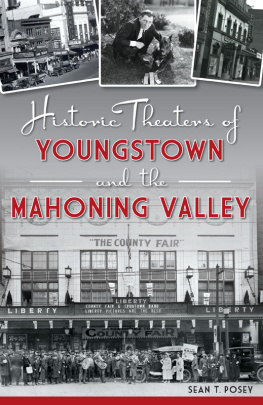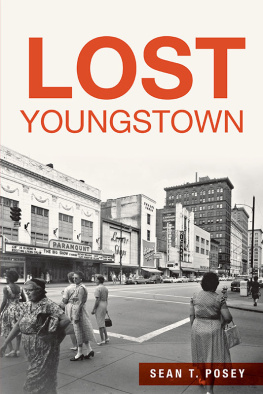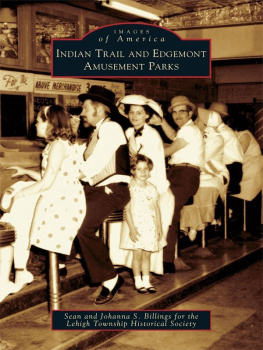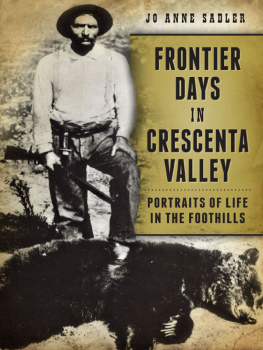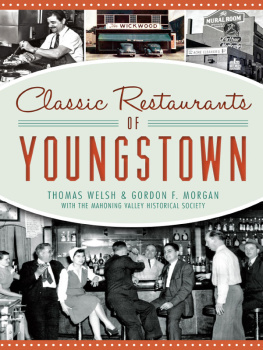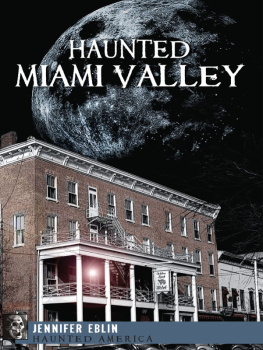


Published by The History Press
Charleston, SC
www.historypress.net
Copyright 2017 by Sean T. Posey
All rights reserved
First published 2017
e-book edition 2017
ISBN 978.1.43966.210.6
Library of Congress Control Number: 2017938352
print edition ISBN 9781467137928
Notice: The information in this book is true and complete to the best of our knowledge. It is offered without guarantee on the part of the author or The History Press. The author and The History Press disclaim all liability in connection with the use of this book.
All rights reserved. No part of this book may be reproduced or transmitted in any form whatsoever without prior written permission from the publisher except in the case of brief quotations embodied in critical articles and reviews.
This book is dedicated to the memory of my grandparents,
Rose and Roger Ridder and Irene Posey.
ACKNOWLEDGEMENTS
Writing a book of this kind requires the kindness of strangers and a great deal of support from loved ones. I would like to thank my mother, Kathleen, and father, Fred, for their unwavering support. I would also like to thank my uncle, Bryan Dew Ridder, for all his kindness and support. Local historian Mark Peyko deserves my gratitude for all the time and attention he has given to my many questions. Videographer Ron Flavianos tremendous work has been instrumental in helping to publicize this book. I would also like to express my gratitude to the reference librarians at the Youngstown Public Library, especially Sally Freaney. Their tenacity in tracking down obscure historical details helped make this book possible. Thomas Molocea and the Mahoning Valley Historical Society have my unwavering gratitude for providing some rare photographs of Youngstowns historic theaters.
I would also like to thank the following for many of the wonderful photos in this book: Patricia Ringos Beach, Doris and Frank Cavanaugh, Barbara Emch, Ron Flaviano, Girard Historical Society, Vince Guerrieri, Mary Ann (Stabile) Lark, Emanuel Mageros, Mike Parise, Mark Peyko, Struthers Historical Society and Marian Kutlesa, Victory Christian Center and the Warren Tribune.
The following individuals kindly took the time to share with me their memories of the many valley theaters: Denny Brayer, Jack Carlton, Doris and Frank Cavanaugh, Bill DeCicco, Frank Big Daddy Delio, Mary Ann Flaviano, Ron Flaviano, Sally Freaney, Sharon Williams Garfield, Mark Hackett, George Viking Hall, Jaime Hughes, Bryan and Roger Jones, Mary Ann (Stabile) Lark, Emanuel Mageros, Candace Candee Reign Mauzy, Liz Moore, Mike Petrello, Mark Peyko, William S. Peyko, Fred Posey, Mike Roncone, Thomas Rowe, Richard Scarsella, Bob Vargo and Helga Wengler.
Introduction
FROM THE WARNER BROTHERS TO BURLESQUE
AN UNLIKELY THEATER TOWN
The village of antebellum Youngstown, Ohio, seemed an unlikely setting for a theater town. Home to fewer than three thousand souls, Youngstown had one small walk-up theaterArms Hall. The coming of the Civil War brought a new impetus to the areas growing iron industry, linked to outside markets by first the Pennsylvania and Ohio Canal and later the railroads. Eventually, Youngstown became a city and the governmental seat of Mahoning County. With economic and population growth came the first real stage theaters: Excelsior Hall and its successor, the Grand Opera House. Vaudeville and traveling plays provided entertainment for a restive population accustomed to brutally hard labor and the economic insecurity that came with the boom-and-bust iron economy.
Theatrical figure Teddy Joyce once remarked, Youngstown is a hard town to make laugh, I believe I understand why. People work unusually hard here. They are physically exhausted, and laughing is just a bit more difficult. Especially in times of economic depression, people are more skeptical. The citys extremely heterogeneous population, increasingly composed of scores of foreigner workers, often missed the subtext and humor of American stage performances; many could barely speak English. All of that began to change with the arrival of moving pictures.
The first public exhibition in the early 1890s of Thomas Edisons Kinetoscope, a primitive device that allowed a single person to view a display of simple moving images through a peephole, heralded the bare beginnings of the motion picture craze that would capture the imaginations of Americans and the world in the early twentieth century. By the early 1900s, the dusty streets of Youngstown had been replaced by a rapidly growing urban core surrounded by an ever-growing skyline of buildings and enormous blast furnaces. Immigrants poured into the city seeking jobs in the steel mills, which were visible from nearly every street downtown. Increasingly visible on downtown streets were numerous nickelodeonsspawned by Edisons inventionthat provided cheap entertainment.
The smoking factories wanted young men who could take suffering and keep their woes to themselves, film mogul and onetime Youngstown resident Jack Warner later recalled. Many of those men (and women) relieved their own suffering, if only momentarily, watching the simple films presented in local arcades. Places such as Dreamland, the Star Theater, the Edisonia, the Luna and the Dome Theater drew in the curiosity seekers and the work weary. The economy and the nascent moving picture industry boomed.
The number of nickelodeons nationally doubled between 1907 and 1908 to eight thousand. This environment nurtured the entrepreneurial talents of the Warner brothers, who used the knowledge they acquired about the moving picture business in the Mahoning Valley to build one of the most powerful film studios in the world. Rae Samuels, a confidante of the Warners, launched her career from Youngstown to national fame as the Blue Streak of Vaudeville. The nations top performers (Al Jolson, Lillian Russell, Maude Adams, Ethel Barrymore and more) graced the stage of the famous Park Theater, which included George M. Cohan as one of its initial investors. In the least likely of settings, industrial Youngstown became a theater town.
As motion pictures began to dominate, early theaters spread to communities throughout the Mahoning Valley. From the A-Mus-U in Struthers to the Palace in Hubbard, neighborhood theaters served walkable communities, becoming as much a part of the landscape as the local cobbler and grocer. In Warren, the second-largest city in the valley, the Warren Opera House, the Hippodrome and eventually the Robins Theater served a growing industrial community.
After vaudeville faded in the early 1930s, the big four downtown movie theaters dominated Youngstown: the Palace, which also hosted music and live acts on its stage; the State Theater; the Paramount; and the Warner Theater. Between 1920 and 1930, only Dayton surpassed Youngstown in population growth among Ohio cities. The Regent, Cameo and Strand also provided entertainment for those seeking to escape the doldrums of the Depression in the citys darkened theaters.

Rose and Roger Ridder walk past the Park Theater marquee in downtown Youngstown, circa 1940. Courtesy of the author.
Next page
